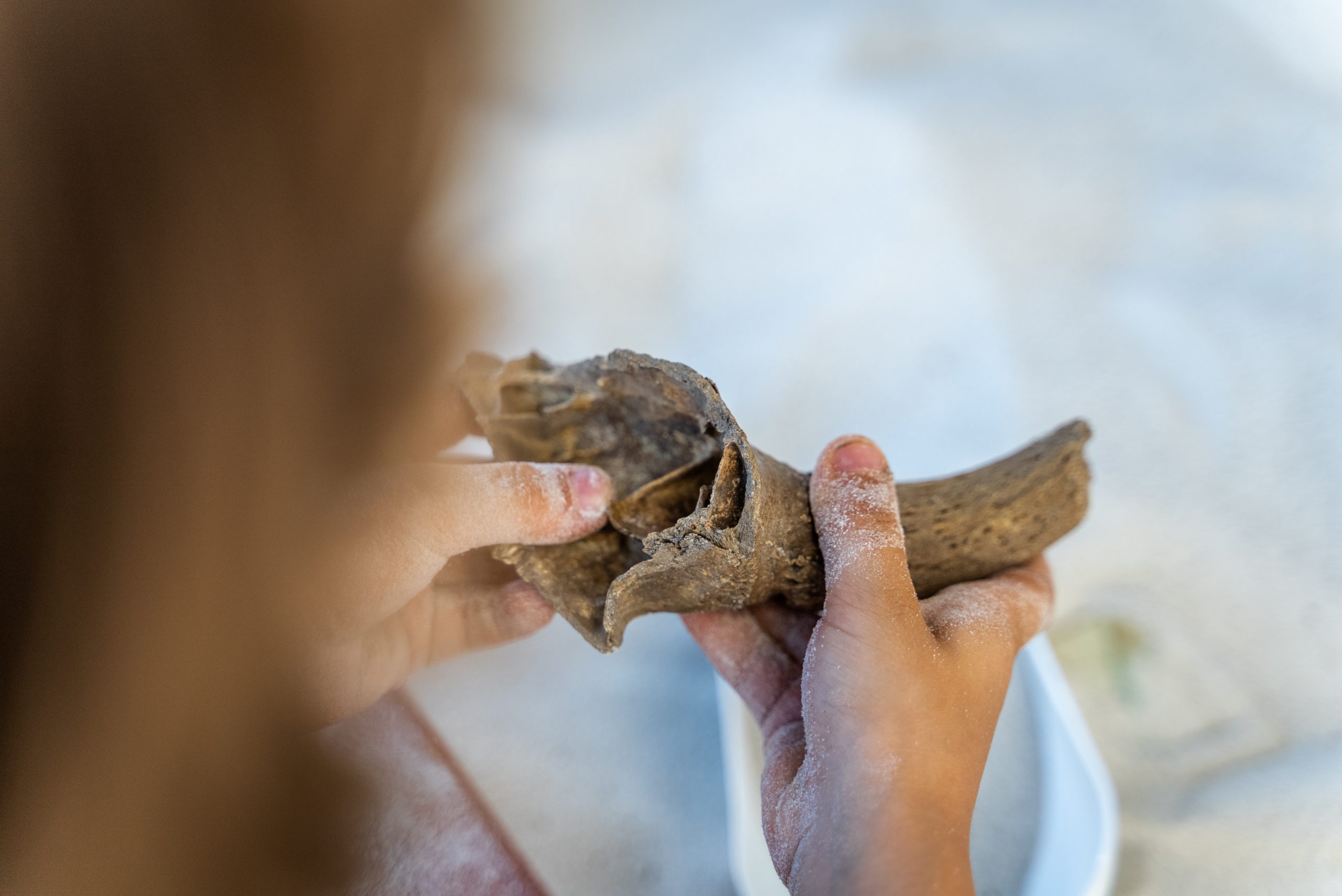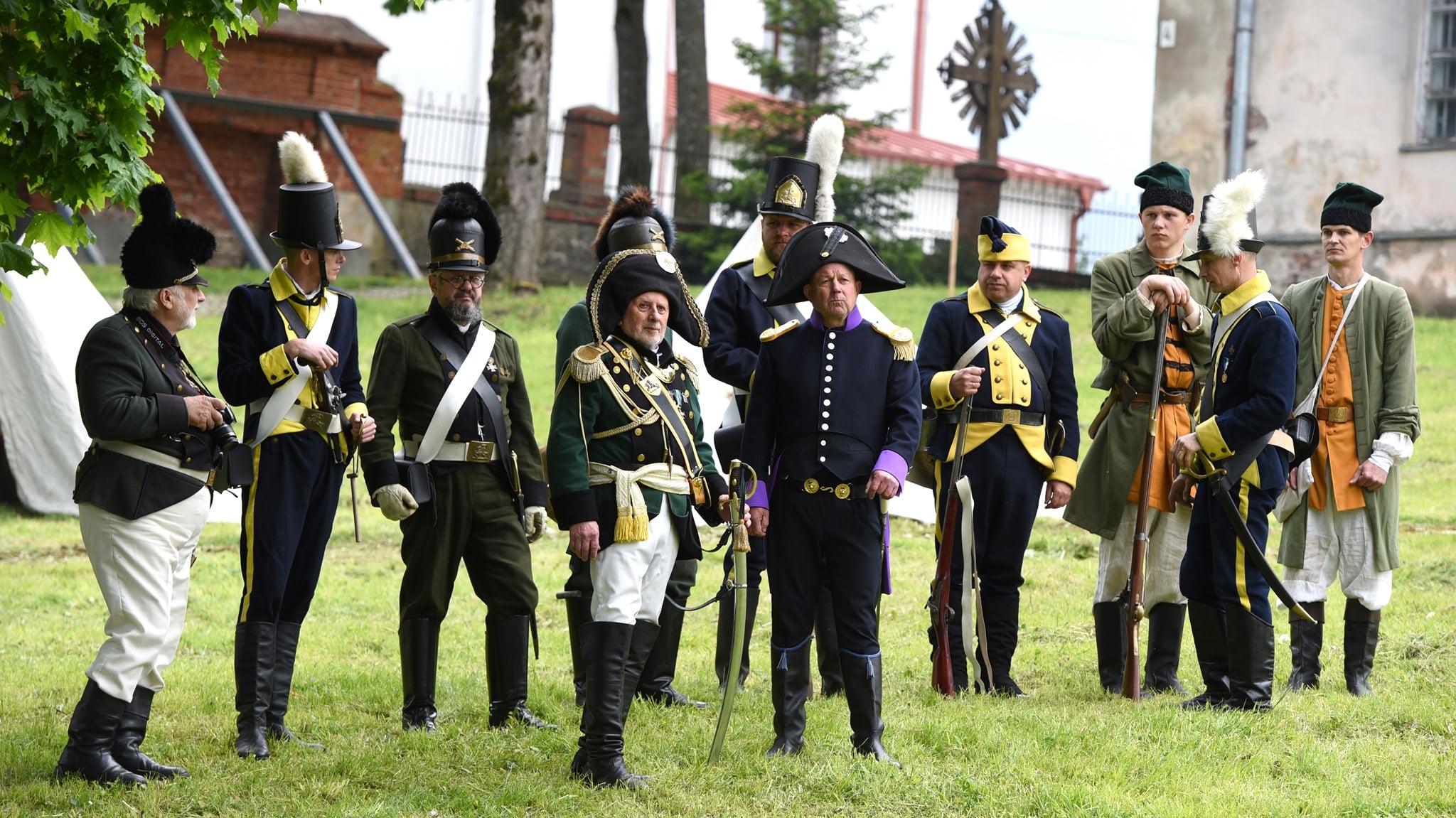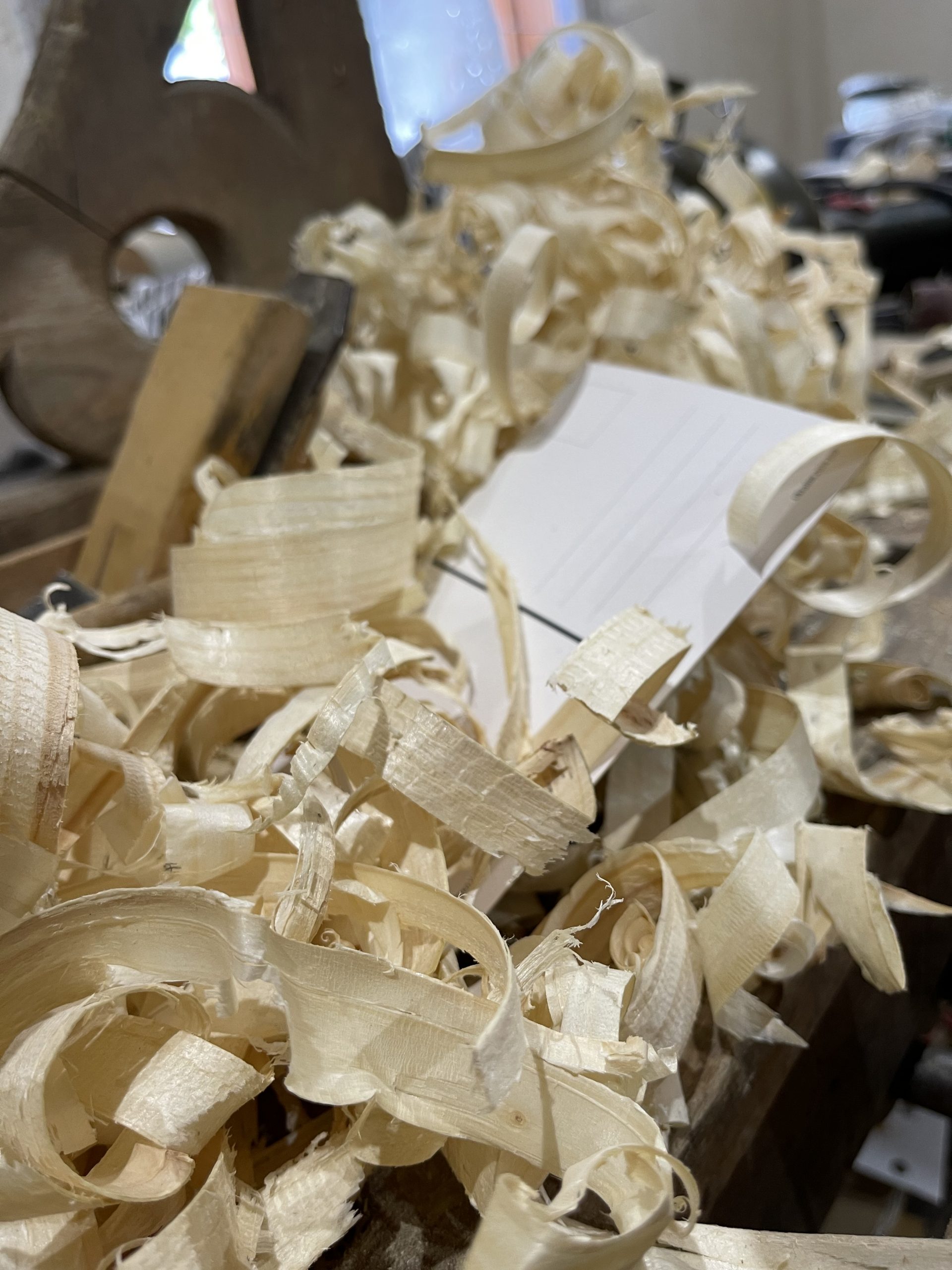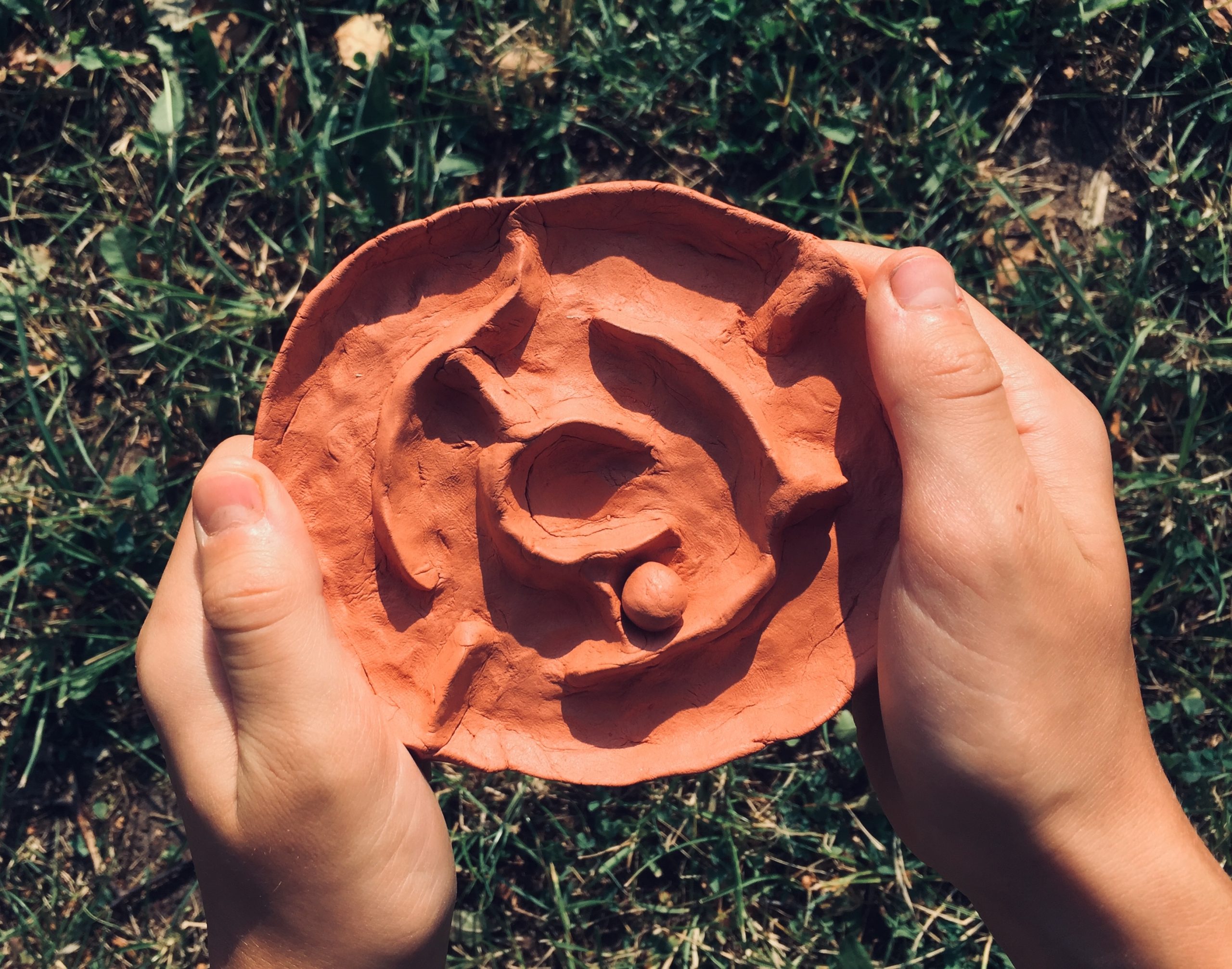Try + Create + Discover
September 24th - 25th, 11.00-19.00
Inner yard of Vilnius county Adomas Mickevičius public library
Discover
Right at the heart of Vilnius, next to the Bernardine Garden, the derelict Kirdiejai Mansion makes passers-by question: What is the history of this ensemble? To whom did it belong? What happened here a few decades ago? Why are these buildings still empty? Vilnius Museum invites you to search for answers to these questions together. We will talk about the Kirdiejai Mansion from the very beginning to the present day, share the findings of our own and other researchers and have a conversation with former squat inhabitants.
We will reveal the secret – the future of the mansion should become clear soon and it can be that the Vilnius Museum will open here in a few years!
We look forward to seeing you in the courtyard of the Kirdiejai Mansion.
Presented by Vilnius museum.
September 19th, Sunday, 12.00
Inner yard of Kirdiejai Mansion, Barboros Radvilaitės str. 6, Vilnius


What is the FIXUS Mobilis project? What does FIXUS Mobilis do and what does it not? What is the mobile workshop of FIXUS specialists like? How should the roof be taken care of to serve as long as possible? The practical training by FIXUS Mobilis will provide answers to all the issues of concern to you about the maintenance of roof and rainwater collection systems, will offer you practical training how to take proper care of the roof cover, rainwater collection system and find temporary solutions to remedy any defects that come up. In addition, you will have an opportunity to see the mobile workshop of FIXUS live!
September 24th - 25th, 11.00-19.00
What is preventive maintenance and how can it help prevent major problems, avoid major damage, save time and money in the future? What can and cannot be done by managers in heritage objects from the legal perspective and what are the opportunities to get state support for heritage conservation and operationalisation? You will get answers to these and other issues of concern in an open consultation by FIXUS Mobilis!
September 25th, 12.00-16.00, Heritas cosultation space, Vilnius county Adomas Mickevičius public library, Great hall


A mobile application “Old and New Vilnius”. Vilnius and its architecture, like many other cities, have changed its face over the centuries. Some places of the capital city can no longer be recognised as there are new structures or squares in their places. How has the capital changed since the images captured by Romantic artists or from the brutal actions of post-war ideologists to the present? The transformation of the Old Town of Vilnius over the last 200 years can be explored in the mobile application “Old and New Vilnius”. This application is a guide that enables interactive exploration of the old Vilnius over different time periods. Gadget users can choose the most interesting route and explore Vilnius as captured in the drawings, investigate fragments of the defensive wall they can see in photographs, the streets of tsarist, interwar, post-war or Soviet Vilnius.
We invite you to try the mobile application “Old and New Vilnius” together and open the missing pages of the history of Vilnius Historical Center!
Presented by the National commission for Cultural heritage
September 24th, 16.00
The database U-HERITAGE developed by the National Commission for Cultural Heritage invites to open the forgotten pages of Lithuanian history. U-HERITAGE will introduce you to hundreds of Lithuanian footprints abroad – activities of prominent Lithuanians, architecture, archaeology, urban heritage, graves and cemeteries, works of art and documentary heritage: photographs and films, incunabula and manuscripts, objects of heraldic significance, etc. U-HERITAGE tells stories about the treasures of the Lithuanian nobility dispersed around the world, about the signs of the schools of architecture of our country in the world, the footprints of our diaspora and many other interesting stories.
All guests of the Heritas Festival are invited to talk and try the database U-HERITAGE developed by the Heritage Commission!
September 24th, 11.00

Try
The workshop presents samples of historical furnace and fireplace tiles, tools, briefs about the technologies of building furnaces, fireplaces and chimneys, the possibilities for their restoration, partial restoration and reconstruction. Training is provided on how to distinguish ancient furnaces pertaining to different periods, how to build and arrange furnace tiles. The workshop offers an opportunity to consult professionals how to assess the technical condition of furnaces, fireplaces and chimneys, how to identify and repair damages, select appropriate materials and products, match technologies and systems.
Workshop presented by Artūras Šuliokas.
September 24th - 25th, 11.00-19.00


The creative workshop will present the production of wooden pillars with traditional Lithuanian decorative elements, the production of window casings, barge boards, other house decoration elements. We will introduce old archaic and modern tools. There will also be a tool sharpening workshop.
Workshop presented by Fabrilis Studium.
September 24th - 25th, 11.00-19.00
“Journey in Time to July 1944” puts the participants in the historical context of that time: the residents of Klaipėda region, as the northernmost border of the German Reich, were the first to feel the impending defeat of Germany in the Second World War, as the Red Army entered the territory of Lithuania in July 1944 and began to approach the German Reich border. In view of this situation, the German government issued an evacuation order for the citizens of Klaipėda region, ordering them to leave their homes immediately and travel urgently to Königsberg (Kaliningrad). People had to decide quickly whether to emigrate to the West or stay at home and hope to survive the war.
The participants of the education activity will change into the clothes of that time, will receive new identities of real people. They will make preparations for the cemetery celebration and a long journey, will empathize with the life of that time. Each of the participants will have to make a decision whether to leave or stay.
Once they return to the present, they will find out what fate befell the members of the boat builder's s family.
Educational programme presented by Gargždai Regional Museum
September 24th - 25th, 11.00-19.00


1. Secrets of the Walpurgis Manuscript
A brief introduction to a duel according to the oldest European fencing manuscript (early 14th c.).
September 24th, 16.00
2. Master Strikes and the Legend of Johannes Liechtenauer
Practical instructions from the most renowned Medieval fencing master how to train and win in a fight with long swords.
September 25th, 18.00
3. Striking the Nobleman's Sword
Did the noblemen of the 17th century Lithuania practice martial arts? Most of them would challenge you to a duel if you doubt it. If you don’t want to lose your head, a little lesson would come in handy.
September 24th, 18.00
4. Non-sports fencing in Lithuania in Smetona times. Basics of fencing with a spadroon, that were written down by J. Jungmeister - professor of War school of Kaunas and a great duel enthuziast.
September 24th, 17.00
September 25th, 17.00
Happening at all times - Getting to know historic fencing: weapon and fight demonstrations
Lecture “Experiencing Heritage through Bruises: Theory and Practice of Historical Fencing” (no early registration required):
September 25th, 11.00, Vilnius county Adomas Mickevičius public library, Great hall
Lessons and lectures presented by Historic fencing associacion HEMA LT.
Have you ever thought what mysterious people with fancy profession names – archaeologists, restorers, paleozoologists and paleobotanists do? Do they look for dinosaur bones, collect fossils or, armed with revolvers, rob treasures from temples in remote lands? We are not characters from action films, but we have loads of curiosities, offer much joy of discovery, and also small, at times stunning victories. The remnants of the house that stood 2000 years ago, a pot made and restored from a pile of broken glass, the lunch of our ancestors collected from a centuries-old garbage pit and served... Visit, try and experience what is unavailable anywhere else – be an archaeologist at least for one day!
Workshop presented by National Museum of Lithuania.
September 24th - 25th, 11.00-19.00


The wrist warmers knit from wool were widespread in Europe, in particular in its Northern countries, between the 19th century and the early 20th century. They were worn in Latvia, Estonia, Belarus, Poland, Lithuania, Scandinavia and elsewhere. They were made for daily and holiday wear. Everyday wrist warmers were worn by both men and women, especially during the cold season when working in the fields or in the forest. Shirts were made with broad sleeves those days and, to make them warmer, wrist warmers were worn on top of the sleeves. Wrist warmers were very convenient for children who were about to outgrow their clothes.
Wrist warmers of daily use were knit of thicker yarns, and those for holidays – out of high-quality thinner, factory-made yarns.
The education session will teach us the basics for knitting wrist warmers, drawing patterns, stringing the right amount of beads and knitting pendants for ourselves.
Workshop presented by folk artist Ramunė Petkevičienė.
September 24th, 11.30, 15.00
September 25th, 11.30, 15.00
The educational session Ancient Tales of Brass Work takes us to a journey in time, about 4000 years back to the period of the Brass Age in Lithuania, when the first metal finds were discovered in this area. The session will present the old history of Lithuania and Rokiškis region, copper alloy processing technologies, the worldview of the Baltic tribes, and their burial and dressing traditions. The practical session will guide in Baltic brass jewellery making and each participant will leave with a unique souvenir.
Educational workshops presented by Rokiškis Regional Museum and Rokiškis tourism information and crafts centre.
September 24th - 25th, 11.00-19.00


The interactive terminal of the session will introduce visitors with the personalities of Counts Tyzenhauz and Pšezdziecki, who lived in the Rokiškis Manor House, to their hobbies and daily activities. You will be welcomed by charismatic teachers who will tour you through the secrets and subtleties of art, etiquette, music, and biology.
Educational workshops presented by Rokiškis Regional Museum and Rokiškis tourism information and crafts centre.
September 24th - 25th, 11.00-19.00
During the session, young visitors will be able to try themselves the role of an archaeologist and find unique artefacts by taking part “archaeological investigations”.
Educational workshops presented by Rokiškis Regional Museum and Rokiškis tourism information and crafts centre.
September 24th - 25th, 11.00-19.00


Artificial thick-layer marble decorations are abundant in the churches of Lithuania. The most recent research indicates that it had been present in the interiors of manor houses. However, the technique itself and its manufacturing technologies have been slightly forgotten. The decorative finish Scagliola, which is close to the artificial marble technique and which flourished in Florence in the 16th century and spread across its borders, is even less known in Lithuania. This workshop will offer training in these largely forgotten techniques for imitating precious materials – once a visitor of the exhibition makes an artificial marble slab and decorates it with the Scagliola technique, they will see the interiors and decorations of many Lithuanian churches in a different light.
Workshop presented by Restoration Department of Vilnius Academy of Arts.
September 24th, 11.00, 15.00
September 25th, 11.00, 14.00
Casein presumably is one of the oldest binding materials for paint used as early as in the ancient Egypt. Casein was widely used as underpaid for oil painting, decorative painting of furniture, walls or other surfaces. Its popularity has grown between the second half of the 19th century and the early 20th century when ready-made paint became available for canvas and wall paintings. Now this technique is alive only in the memory of older generation artists and chemists-technologists. The workshop will teach the old paint production technology – visitors of the exhibition will get casein from curds with their own hands, then will turn it to paint and will decorate gypsum mouldings or will paint on paper.
Workshop presented by Restoration Department of Vilnius Academy of Arts.
September 24th, 12.30, 16.30
September 25th, 15.30


The workshop will brief its visitors about the process of gilding and will introduce three most popular techniques: glazed gilding on bole, matt oil gilding and gilding with gold powder. Gilding was applied on larger or smaller parts of paintings, frames of paintings, details of furniture, polychrome sculptures and other artworks.
Workshop presented by Restoration Department of Vilnius Academy of Arts.
September 25th, 12.30
Traditional straw gardens are one of the Lithuanian traditional art forms. They are volume decorations of precise geometric forms, and carry aesthetic as well as sacral functions. They used to be made for weddings, baptising, traditional holidays, and hung above the table in the hope that harmony will prevail at home and in relations with the world and oneself.
Straw toys or gardens are strung on a thread made of dry straw, thus forming various geometric shapes. The simplest traditional form is two pyramids connected by foundations, but even this small piece requires diligence and patience.
Participants will learn during the workshop to prepare straws, then string them into a toy, decoration or small garden.
Workshop presented by Vilnius Ethnic Culture Centre.
September 24th, 16.00
September 25th, 12.00, 15.00


Candle making has been known since ancient times as a craft often practised by women and children on long winter evenings. In ancient times, a candle was not only a unique source of light, but also an object that served a ritual function. It was made upon the birth of a child, lit during baptising, during weddings, and later during funerals when the deceased was accompanied from this life with the light of Candlemas candles.
Participants of the workshop will learn about the craft of candle making and related customs, will make scented natural beeswax candles for themselves.
Workshop presented by Vilnius Ethnic Culture Centre.
September 24th, 13.00
September 25th, 11.00, 12.00
Tablet band weaving is one of the oldest band weaving types, which has a variety of colours and patterns, and requires much accuracy and patience. For band weaving, wool threads of different colours and tablets, most often made from wood or bone, are used. Band patterns can be very diverse: from highly complex to very simple, for example, longitudinal stripes, arrows, warps.
The participants of this workshop will find out about traditional band patterns and ornaments, learn how to draw a scheme, thread the tablets and weave a band for themselves.
Workshop presented by Vilnius Ethnic Culture Centre.
September 24th, 15.00
September 25th, 14.00


Open photography workshop invites you to discover the secrets of ancient photography methods. We will be photographing in an ancient method that is similar to „Polaroid“ where a single picture is created by an old camera directly onto the photopaper and is developed at once.
Workshop is presented by Open photography workshop.
September 24th - 25th, 11.00-19.00
The education session will present the army types, armaments and uniforms of the Polish–Lithuanian Commonwealth / the Grand Duchy of Lithuania of the 18th and 19th centuries. Cold weapons and firearms will be presented: a French-style tesak, a sword of the cavalry corps of Field Marshal von Blücher, an artillery lighter; flintlock dragoon musket. You will see uniforms of the riflemen of the artillery of the Grand Duchy of Lithuania and Kaunas county and will find out what a shako and a forage cap mean. You will find out how vivandières and cantinières were related to the warfare heritage.
Educational programme presented by „Kauno pavieto laisvieji šauliai".
September 25th, 11.00-19.00
Education "Scythers formation"
September 25th 12.00, 14.00


A workshop on brick-laying of Gothic windows and stone masonry for children and adults. The principles of restoration and re-building of masonry, an exposition of old bricks pertaining to different periods. Welcome to join in our masonry work!
Workshop presented by MG Mūras.
September 24th - 25th, 11.00-19.00
Create
Illusions – Science, Mystics or Deception? – is the most popular education programme at the Energy and Technology Museum. Participants will find out during this activity what illusions are, how they get formed, what a mirage and artificial perspectives mean, and will experience more stunning optical illusions in the showrooms of interactive exhibits!
Educational programme presented by Energy and Technology Museum.
September 25th, 14.00


Children enjoy making bats: colour and cut out their stencils, fold them out of paper, make various decorations with bats ... make treats! At Heritas 2021, we will cut out and decorate paper bats to fly on your finger, will fold a night flyer, make a bat – a gift box. Dalia Šaumanienė, a guide and educator of the Kaunas Fortress Park, would like to welcome at Heritas everyone who knows anything or would like to learn about the residents of the Kaunas Fortress, its night guards, and make their own bat.
Workshop presented by Kaunas Fortress Park.
September 25th, 12.00 (recommended for 4-8 year of children)
September 25th, 14.00 (recommended for 6-10 year children)
September 25th, 16.00 (recommended for 4-10 year children)
The workshop will give you an opportunity to make a postcard decorated with facade details typical of Vilnius wooden houses. The drawings of wooden elements represented in the catalogue of windows, casings and sidings of the wooden houses in Žvėrynas as published by the Museum in 2020 have been simplified and transferred to stencil forms for you to use for designing your postcard picture. The workshop is for children and not only – everybody has a friend who is looking forward to greetings!
Workshop presented by Museum of Urban Wooden Architecture.
September 24th - 25th, 11.00-19.00


The Toy Museum invites you to make one of the oldest and still most popular games for coordination training – the maze. This principle of the game has been known since the Indus Valley civilization. The idea is old and looks very simple, but each of us can rely on fantasy and interpret this game in our own way. Handmade mazes clearly show how the game complexity and appearance can differ depending on who has made it. Attention! Clay is used in the workshop, so the production process is not clean. Finished games should be dried at home for 24 hours.
Workshop presented by Toy museum.
September 24th, 18.00